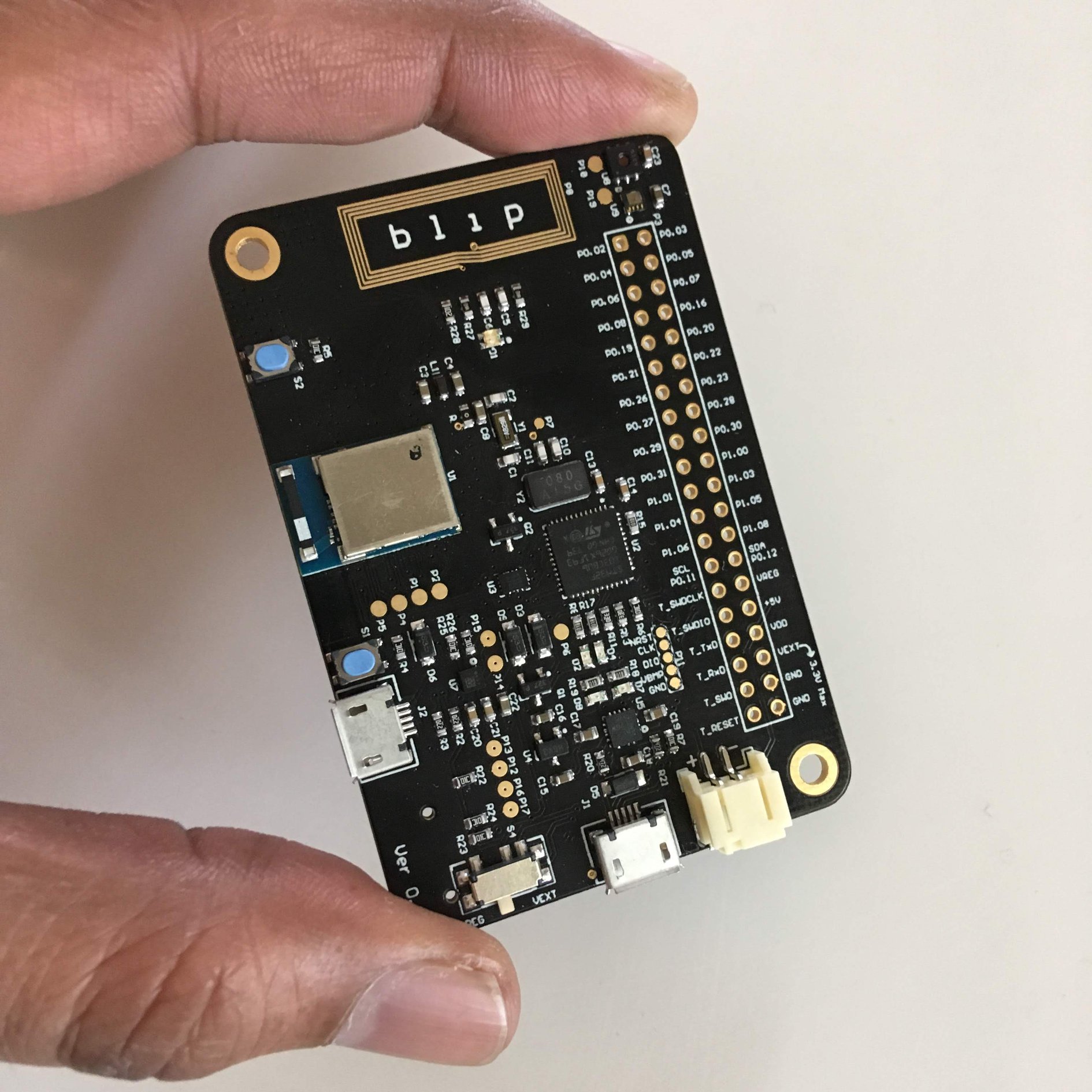Electronut Labs Blip¶
Overview¶
The Electronut Labs Blip hardware provides support for the Nordic Semiconductor nRF52840 ARM Cortex-M4F CPU and the following devices:
- ADC
- CLOCK
- FLASH
- GPIO
- I2C
- MPU
- NVIC
- PWM
- RADIO (Bluetooth Low Energy and 802.15.4)
- RTC
- Segger RTT (RTT Console)
- SPI
- UART
- USB
- WDT
More information about the board is available at https://github.com/electronut/ElectronutLabs-blip.
Hardware¶
Blip has two external oscillators. The frequency of the slow clock is 32.768 kHz. The frequency of the main clock is 32 MHz.
Supported Features¶
The nrf52840_blip board configuration supports the following hardware features currently:
| Interface | Controller | Driver/Component |
|---|---|---|
| ADC | on-chip | adc |
| CLOCK | on-chip | clock_control |
| FLASH | on-chip | flash |
| GPIO | on-chip | gpio |
| I2C(M) | on-chip | i2c |
| MPU | on-chip | arch/arm |
| NVIC | on-chip | arch/arm |
| PWM | on-chip | pwm |
| RADIO | on-chip | Bluetooth, ieee802154 |
| RTC | on-chip | system clock |
| RTT | Segger | console |
| SPI(M/S) | on-chip | spi |
| UART | on-chip | serial |
| USB | on-chip | usb |
| WDT | on-chip | watchdog |
Connections and IOs¶
LED¶
- LED1 (green) = P0.13
- LED2 (red) = P0.14
- LED3 (blue) = P0.15
Push buttons¶
- BUTTON1 = SW1 = P1.07
- Reset = SW5 = P0.18 (can be used as GPIO also)
UART¶
BMP does not support hardware flow control, so only RX/TX pins are connected.
- TX = P0.6
- RX = P0.8
SPI¶
- SCK = P0.25
- MOSI = P1.02
- MISO = P0.24
MicroSD is connected to these pins, and CS pin is connected to P0.17.
Programming and Debugging¶
Applications for the nrf52840_blip board configuration can be
built and flashed in the usual way (see Build an Application
and Run an Application for more details); The onboard Black Magic
Probe debugger presents itself as two USB-serial ports. On Linux,
they may come up as /dev/ttyACM0 and /dev/ttyACM1. The first
one of these (/dev/ttyACM0 here) is the debugger port.
GDB can directly connect to this port without requiring a GDB server by specifying
target external /dev/ttyACM0. The second port acts as a
serial port, connected to the SoC.
Flashing¶
Applications are flashed and run as usual (see Build an Application and Run an Application for more details).
Here is an example for the Hello World application.
First, run your favorite terminal program to listen for output.
$ minicom -D <tty_device> -b 115200
Replace <tty_device> with the serial port of Black Magic Probe.
For example, under Linux, /dev/ttyACM1.
Then build and flash the application in the usual way.
# On Linux/macOS
cd $ZEPHYR_BASE/samples/hello_world
mkdir build && cd build
# On Windows
cd %ZEPHYR_BASE%\samples\hello_world
mkdir build & cd build
# Use cmake to configure a Ninja-based build system:
cmake -GNinja -DBOARD=nrf52840_blip ..
# Now run ninja on the generated build system:
ninja
ninja flash
Debugging¶
Debug and attach configurations are available using Black Magic Probe, and
ninja debug, or ninja attach (or with make) are available.
NOTE: You may need to press the reset button once after using ninja flash
to start executing the code. (not required with debug or attach)
Testing the LEDs and buttons in the nRF52840 PDK¶
There are 2 samples that allow you to test that the buttons (switches) and LEDs on the board are working properly with Zephyr:
You can build and flash the examples to make sure Zephyr is running correctly on your board. The button and LED definitions can be found in boards/arm/nrf52840_blip/nrf52840_blip.dts.
